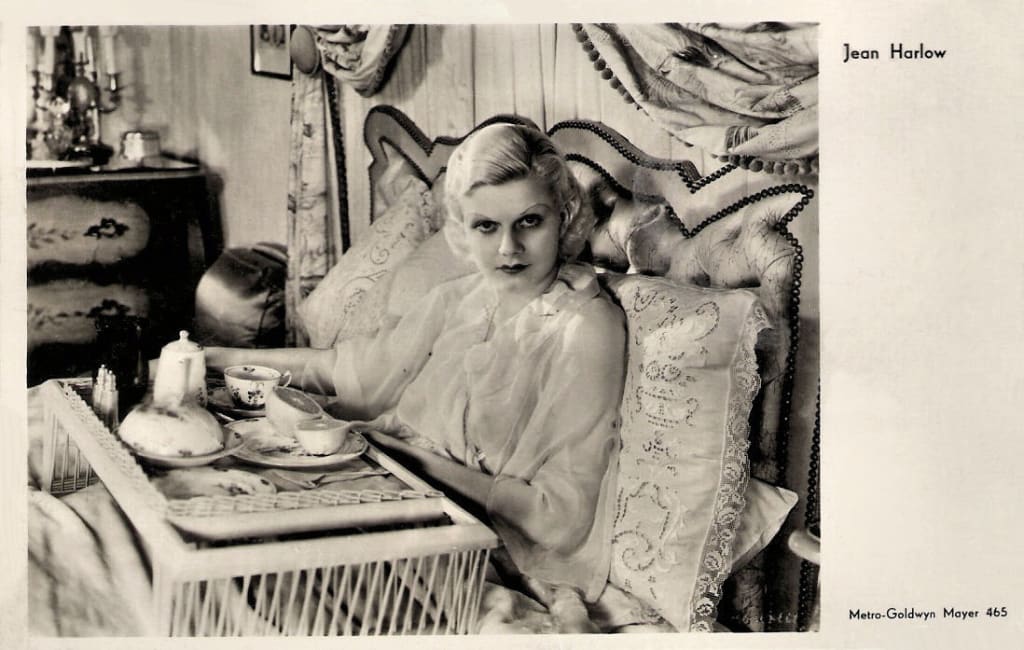Lessons from a 1930’s Budgeting Book
During these unprecedented times one needs to get up to scratch on how to Make Things Work. The current crisis has impacted our physical and mental health whilst also emptying our bank accounts. As a freelance creative and a small business owner...

During these unprecedented times one needs to get up to scratch on how to Make Things Work. The current crisis has impacted our physical and mental health whilst also emptying our bank accounts. As a freelance creative and a small business owner, I feel particularly affected by the ongoing lockdowns we’re experiencing in Australia, as well as the coronavirus pandemic at large. So when I was gathering a few books to keep me company during Melbourne’s sixth lockdown I couldn’t resist adding Orchids On Your Budget to cart. There’s something especially drab about having to read any kind of budgeting book, but reading one with the glimmer of the late 30s involved felt a little more palatable. Orchids On Your Budget was published on the tail end of the depression, not long before the second a world war, certainly extremely tough times for so many, but really was that financial situation all that different from the one we are facing now?
In reality we are living through terribly tough times. Honestly, there was even an earthquake in Australia today, for crying out loud…! It’s also highly likely that it will take the economy a while to heal once things go back to ‘normal’. For millennials like myself financial stability beyond the pandemic is daunting regardless - for example house prices in Sydney and Melbourne are predicted to go up by 20% in the next year - I mean, WTF! In my case I have gone from being on a relatively good salary until February of last year, when I couldn’t take working in an office for a moment longer and opted to leave my job (great timing, I know). Whilst I was part of a fabulous team and a wonderful workplace, in my heart I knew I was on the wrong path as my role was becoming increasingly corporate. At the time I was also unwell with a chronic illness that was only getting worse, and there’s nothing like a health scare to kick you in the direction you should be going. It was clear to me that I needed to pursue my creativity and true talents in order to live authentically and happily.
Of course by the time I actually left said job we were in the throws of the first wave of Covid-19 and the first lockdown. Before leaving the comfort of a salary, I’d organised some contract work to keep me covered as I navigated my new freelance life, which immediately fell through as the economy shrunk overnight with the onset of the pandemic. I had some savings but not enough to sustain myself for too long, and more than that I had planned to invest these savings into the vintage business I was hoping to open. I was scared but I still trusted in my choice to leave my secure role and venture out into the gig economy. I am a hustler after all - I had lived alone in London and Sydney for a long time when I was younger and always managed to fund my existence, despite my appallingly low income, penchant for travelling and luxurious tastes.
Since my new way of life began last year, I have continued to manage to make it work, which brings me to the book’s first message; budgeting is not about scraping every last penny away, it’s about managing to live well on less. The author, Marjorie Hillis, assistant editor of American Vogue at the time, gives multiple examples of various scenarios one might face amidst an economic crisis, and recommends ways to make each situation work. It’s not about living on scraps as you save, it’s merely about always being ever-so-slightly ahead in your bills.
Marjorie then goes on to emphasise the fact that there are many humble folk out there who are able to make good on less, vs the tasteless rich who’s ostentation is often nothing to aspire to. She empowers her readers not to feel shame when scaling back is required, saying that one needn’t be secretive about downsizing or tightening their belt, as it’s unlikely anyone will really notice, nor are you obliged to share this fact with anyone. She recommends rather charming solutions to not being able to host people in the same way you might’ve before, such as having people over for a tea party rather than for dinner, or doing things like editing your wardrobe to mix-and-match, so you never run out of stylish outfits. Above all the main message in Majorie’s book is that everything is about attitude. Coco Chanel, queen of the quote, once said, “There are people who have money and there are people who are rich.” This type of sentiment is exactly what this book is about.

What I found even more interesting than that was how contemporary some of her advice really was. She even recommends a side-hustle, because, as it turns out, women in the 1930s had side hustles too. When she delves into small business ideas she recommends pursuits like setting up a shop at the front of your house (I must admit I actually have done this with my own vintage business - not as ridiculous as it sounds), teaching bridge (funnily enough my Mum’s choice of work as she recently re-entered the workforce after 25 years), or starting a small lingerie emporium from your kitchen table. She even talks of certain women of the time who venture into big business and thrived. We have to remember that this was an era where many women, especially in big cities like New York, did work and did have careers. It was only in the post-world war two, midcentury America, when that empowerment for women to have a career was taken away as the economy was so buoyant and households could be sustained on just one salary once more. On that note, perhaps a struggling economy can be a good thing for women!
As a vintage shop owner and writer, I spend a lot of time in my romantic head. I know that I romanticise the past with that, but I really believe that this book has a pool of knowledge to offer, which so many modern people can pull from. If you happen to read this book you have plenty of frivolous, fun, but equally practical advice to look forward to - not to mention snappy copy in the style of a 1930s women's magazine. I recently listened to an episode of the What’s Her Name podcast featuring Joanna Scutts, author of The Extra Woman: How Marjorie Hillis Led a Generation of Women to Live Alone and Like It. The episode, titled The Single Lady, has Joanna reiterate Marjorie’s empowering message of how women should strive to be self-sufficient, and enjoy life in the process.
So for my fellow freelancers, or frankly anyone whose finances are suffering during these uncertain times, I suggest you read this book. And don’t forget, everything is about attitude.
You can buy the book here.
About the Creator
Charlotte Dallison
Charlotte Dallison is a freelance writer and vintage shop owner, based in Melbourne, Australia. In a past life she was also an interior designer.






Comments
There are no comments for this story
Be the first to respond and start the conversation.